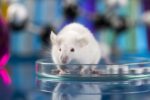Automated Imaging Method Seen to Accurately Capture PF Severity

Natali _ Mis/Shutterstock
A new, automated computer image analysis technique was able to accurately assess and measure the severity of pulmonary fibrosis (PF) using patients’ lung tissue samples, a study reported.
According to its researchers, this technique may complement conventional measures of disease severity, and could prove useful in assessing a range of other fibrotic lung disorders.
The study, “Automated Digital Quantification of Pulmonary Fibrosis in Human Histopathology Specimens,” was published in the journal Frontiers in Medicine.
PF severity informs both treatment decisions and expectations of a disease’s course (prognosis). For this reason, tools to accurately and objectively measure PF severity are needed.
Current methods, however, can deliver varying results, the study noted. Some, such as Ashcroft scoring, rely on human observation, and even a single sample can be scored differently by different observers. Computer digital imaging analysis helps to get around this shortcoming, but some rely on random testing of different areas of a tissue sample. Because fibrotic (tissue scarring) areas are not evenly distributed, samples selected can lead to over- or underestimations of disease severity.
A team of researchers at the National Institutes of Health, working with colleagues, developed an automated software program capable of rapidly and independently scoring entire tissue sections. This program was first tested in a mouse model of induced PF; now, these researchers assessed its performance in human tissue samples.
Specifically, they applied their technique to explants — tissues taken from patients and grown in the lab — and to biopsy samples from seven people with idiopathic pulmonary fibrosis (IPF) and three with Hermansky-Pudlak syndrome pulmonary fibrosis (HPS-PF), a rare genetic disease that often leads to PF.
They then compared explants from IPF and from HPS-PF patients, and explants to biopsies among IPF patients.
Overall, the automated software’s findings agreed with other assessments of clinical severity, and indicated this automated approach may be more sensitive than other methods.
Researchers used biochemical techniques to label fibrotic areas in patient lung samples. After analyzing stained images, the automated program found lung explants from HPS-PF patients had significantly higher amounts of fibrosis compared with explants from IPF patients. The program also found significantly more fibrosis in IPF explants than in biopsy samples.
These findings are in line with HPS-PF possibly being more aggressive and severe than IPF, as suggested by its earlier age of onset. Likewise, IPF explants are expected to show more advanced disease than biopsy tissue, as explants more often come from patients with severe disease undergoing lung transplants.
The automated method also correlated well with measures of pulmonary function associated with each sample. That is, greater disease severity as deemed by the automated program was associated with poorer lung function.
Interestingly, HPS-PF and IPF samples had similar amounts of collagen — a protein that is a known driver of fibrosis — despite HPS-PF samples scoring higher for disease severity. Investigators suggested this score difference with the HPS-PF samples could be caused by more immune cells aggregating to sites of inflammation and fibrosis.
No statistically significant differences in the percentage of macrophages were found between HPS-PF and IPF explants, an outcome researchers said might have been influenced by the low number of available samples. (Macrophages are immune cells highly associated with PF.)
This experimental technique, the researchers wrote, may provide a way of evaluating such differences, in addition to measuring fibrosis severity, and it could be applied to similar lung disorders.
“We show that the automated digital quantification we developed … for assessment of pulmonary fibrosis in human lung specimens from patients with HPS or IPF is advantageous because this method provides accurate, reliable and reader-independent continuous measurements of fibrosis severity in entire lung tissue sections,” the team wrote.
As such, it “may complement other conventional measurements of pulmonary fibrosis severity and has potential application in preclinical studies and clinical investigations focusing on fibrotic lung disease and other diffuse pulmonary diseases, such as sarcoidosis, hypersensitivity pneumonitis, or COVID-19,” the researchers concluded.








